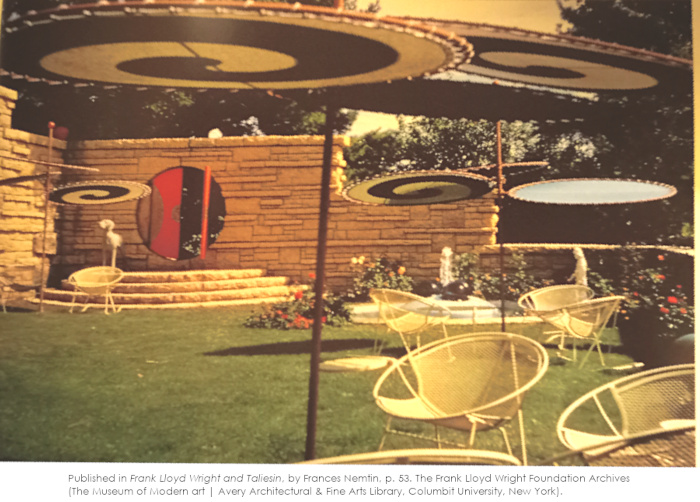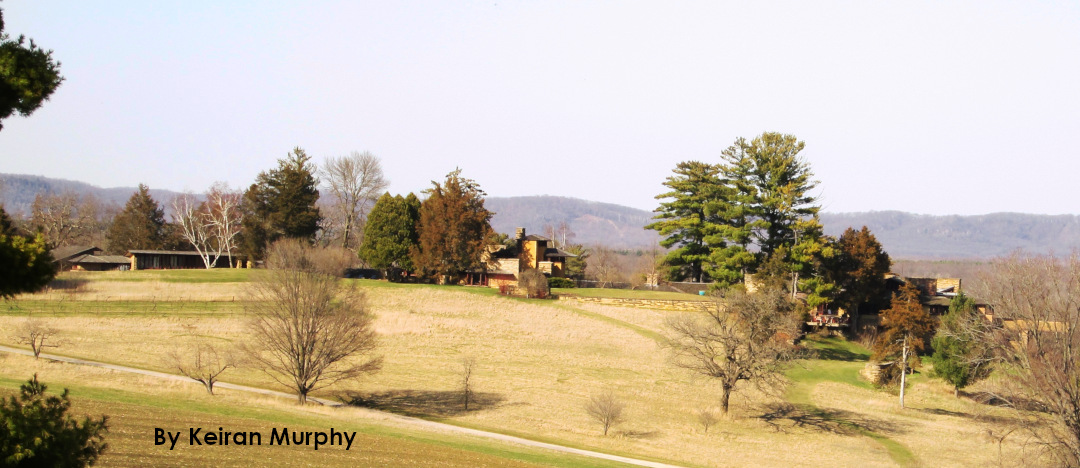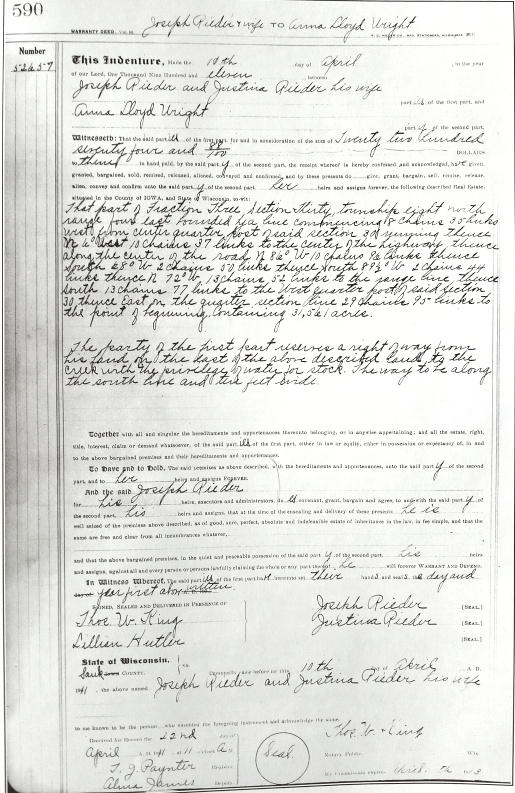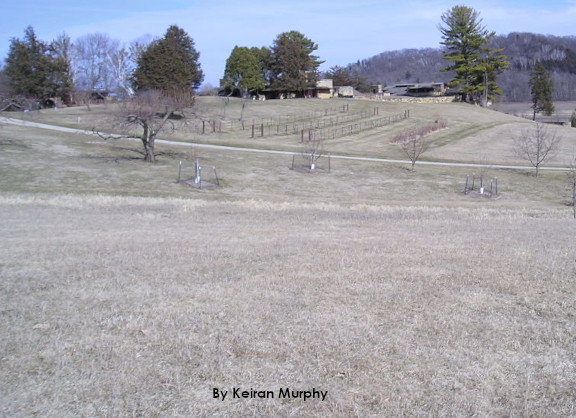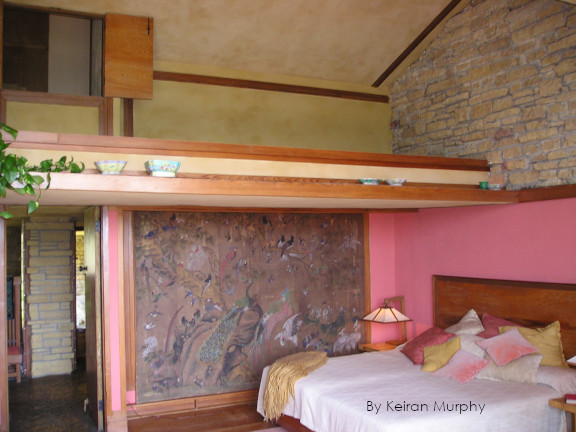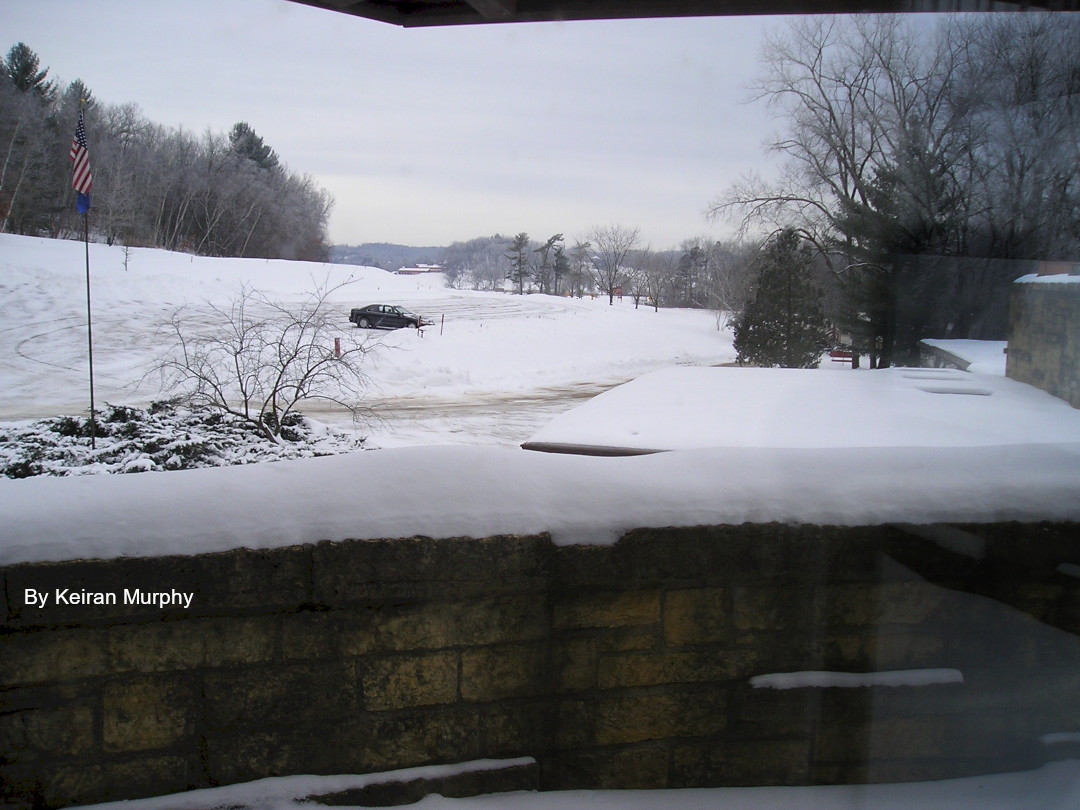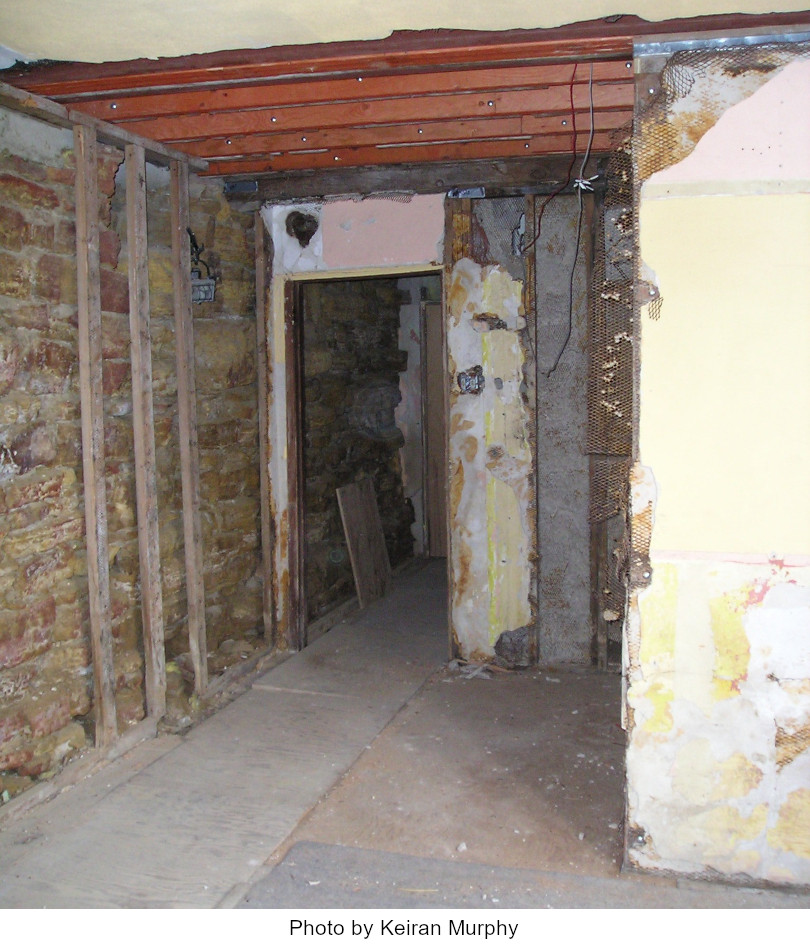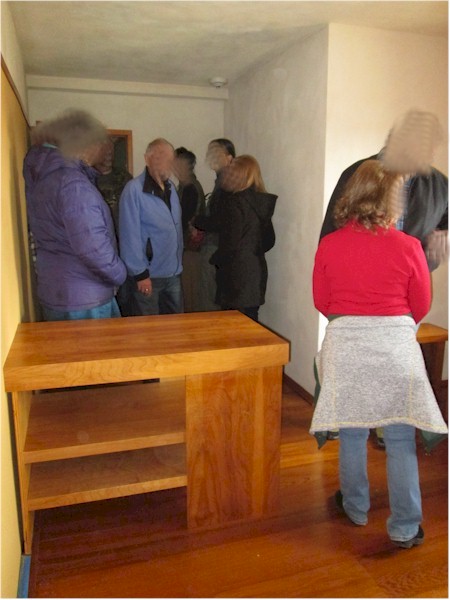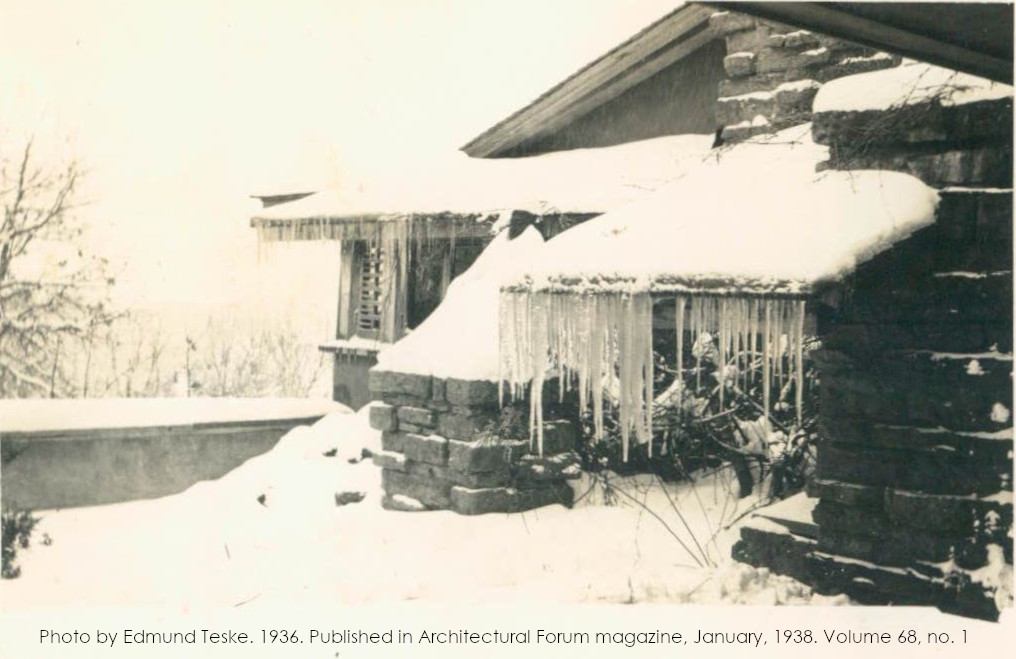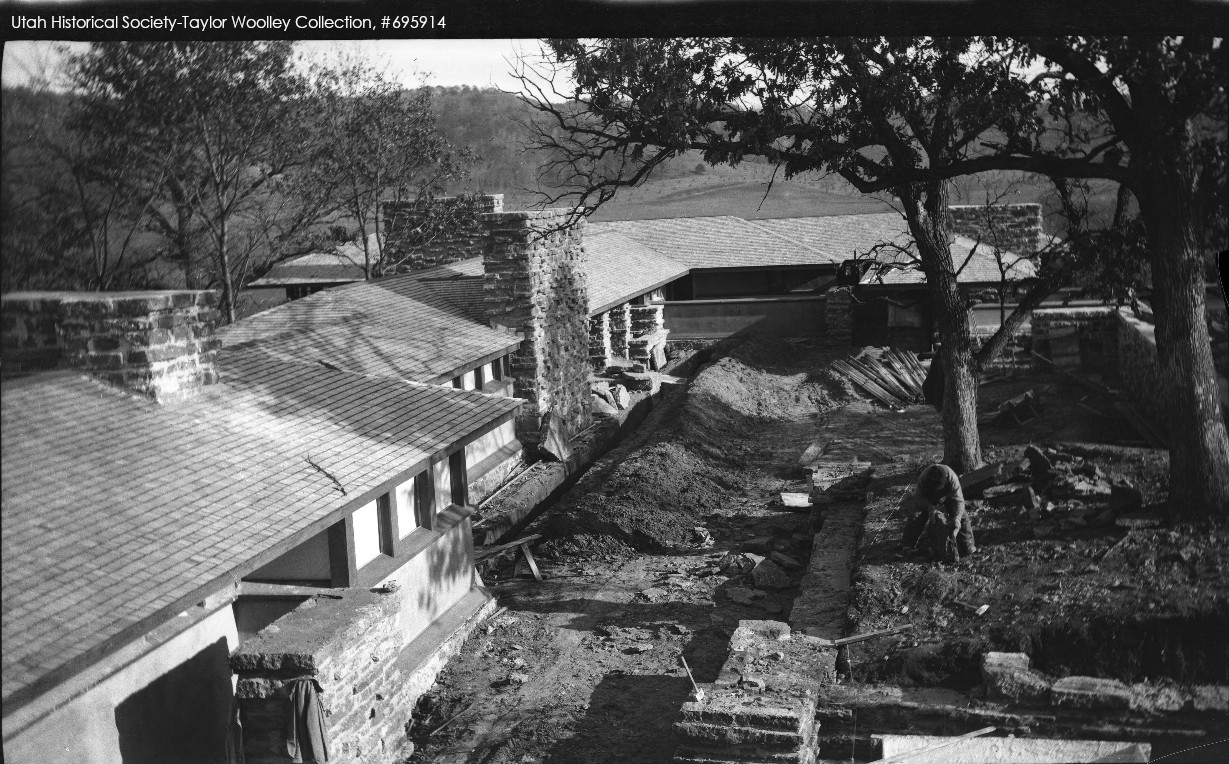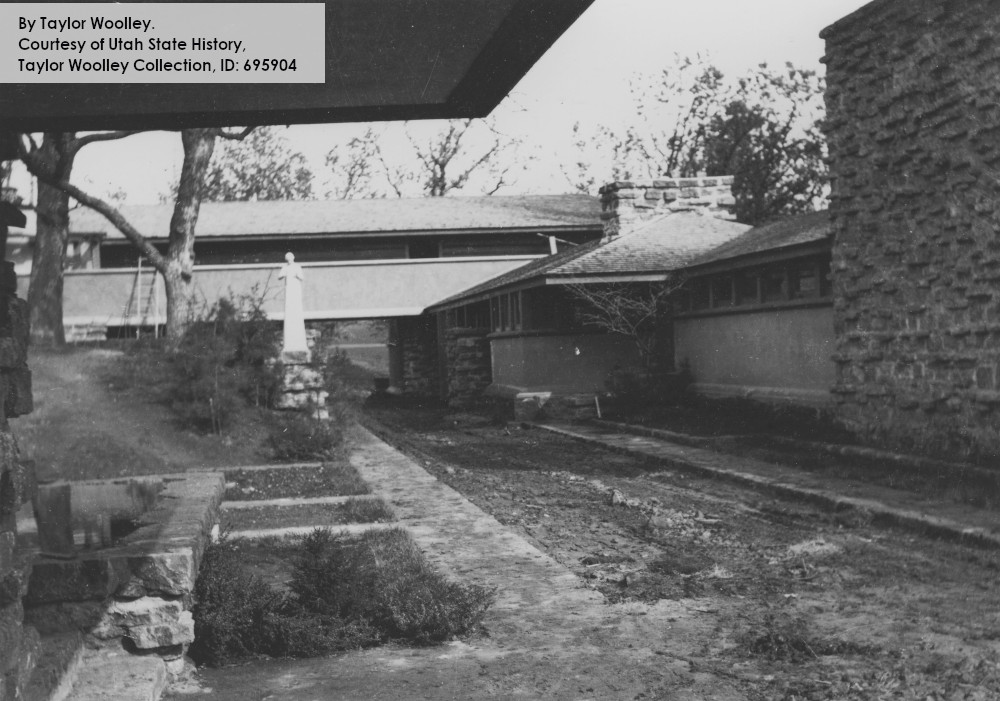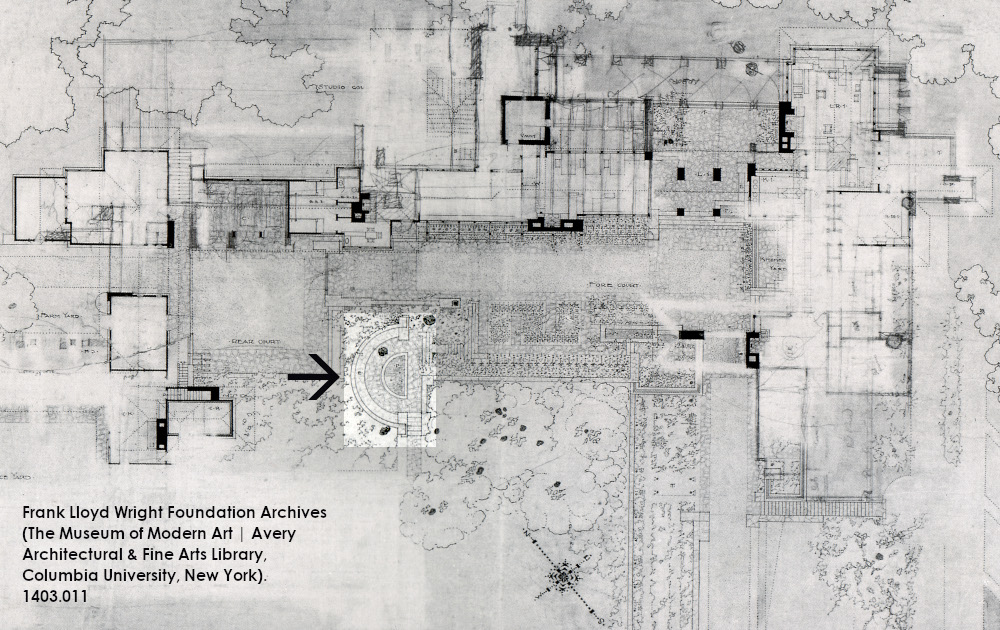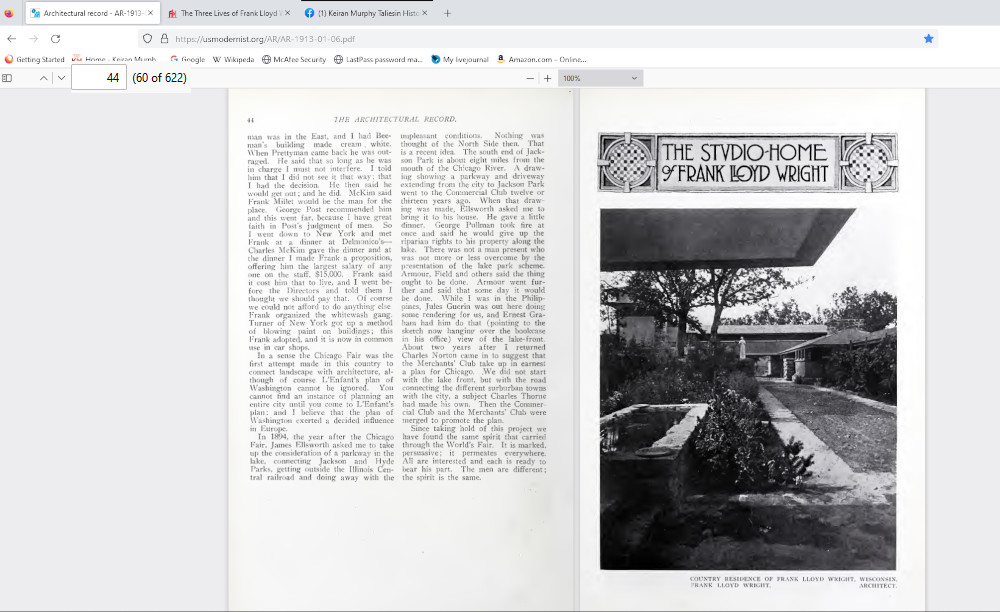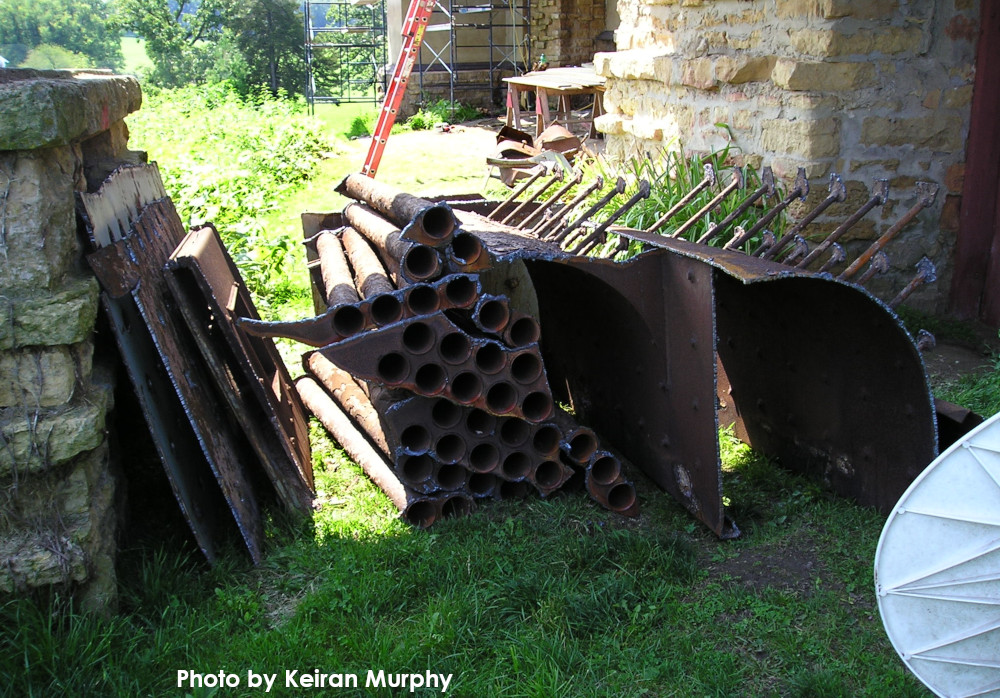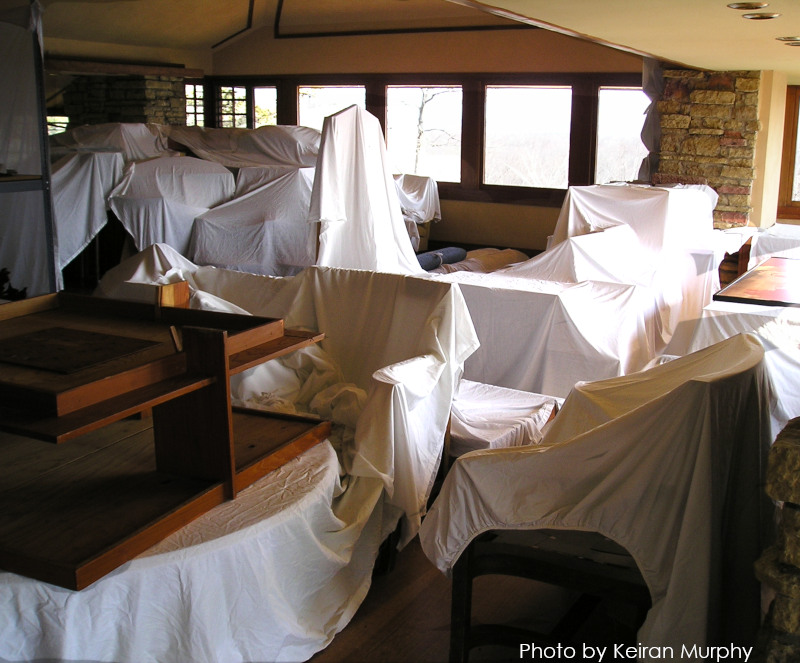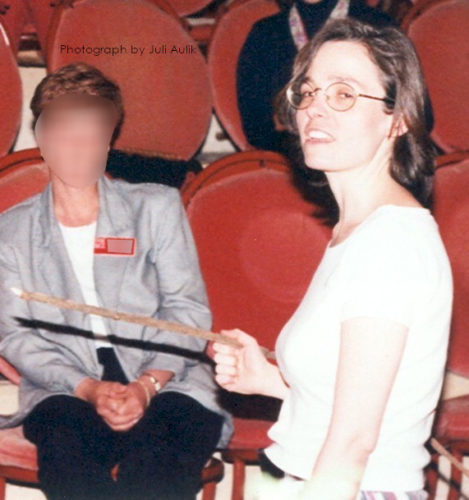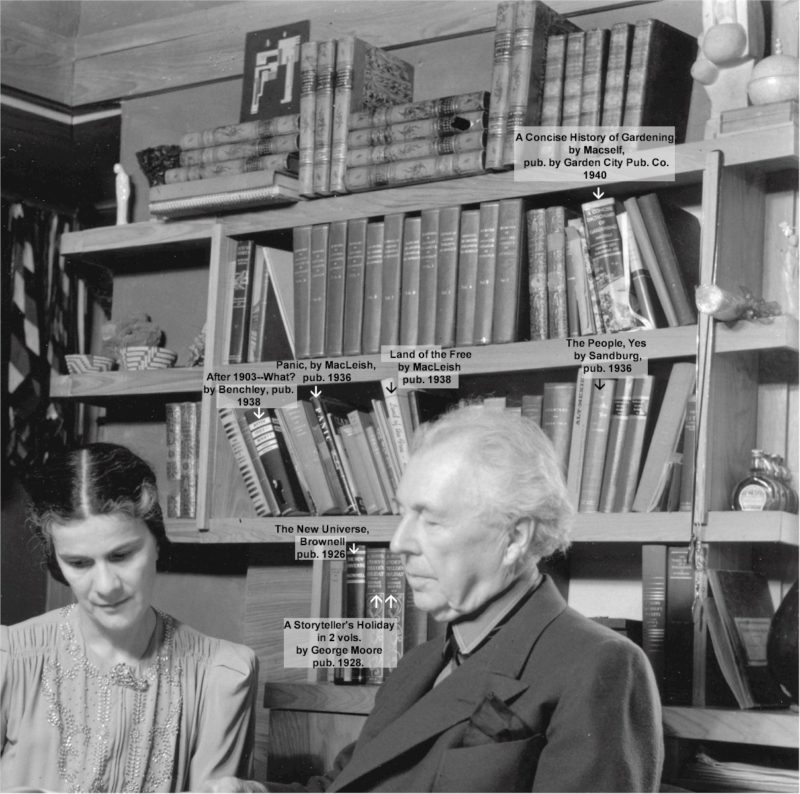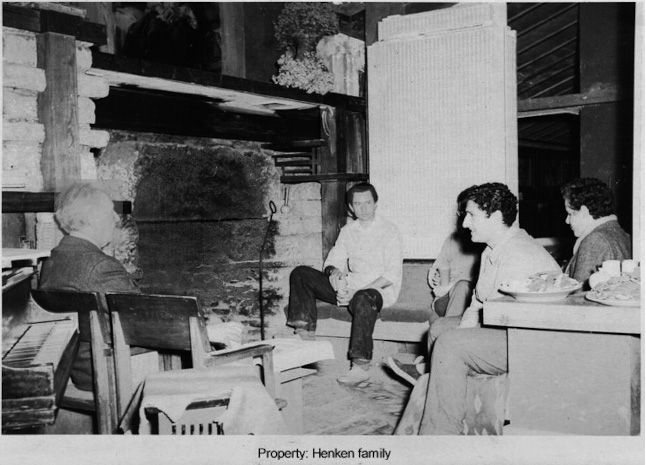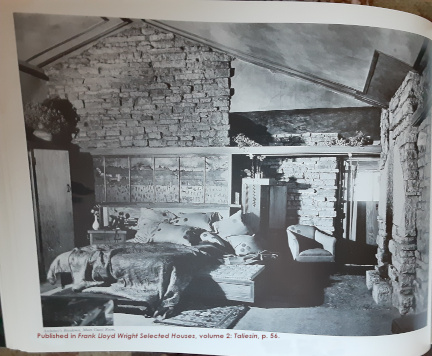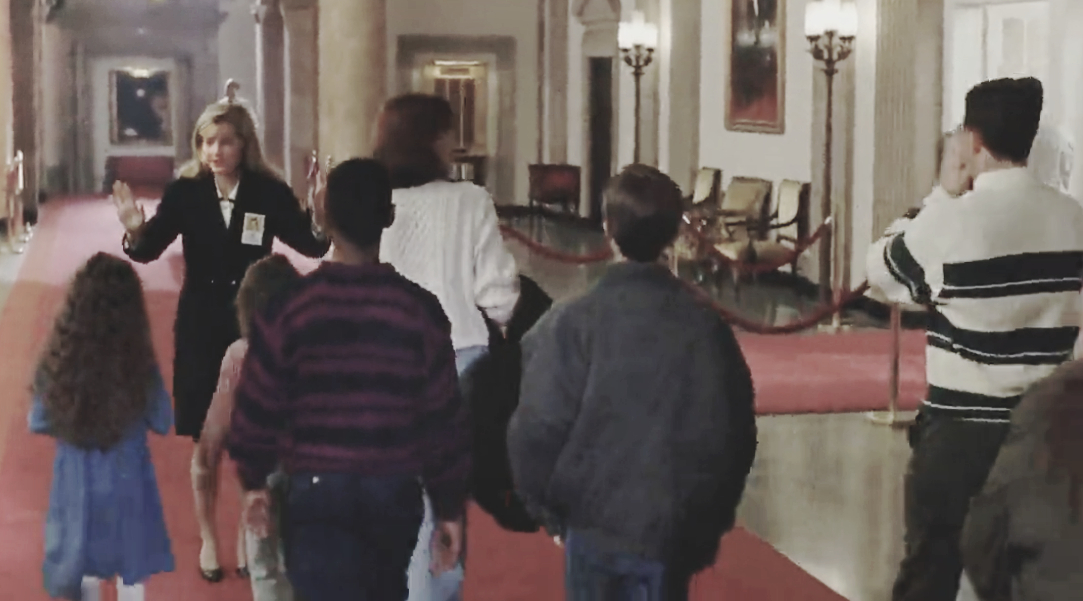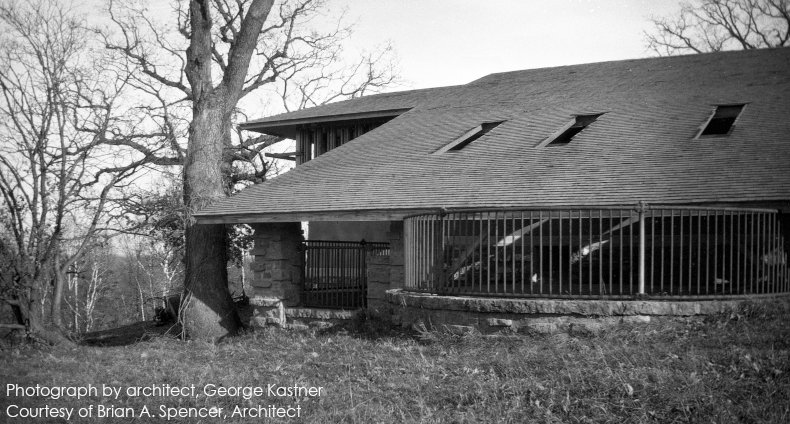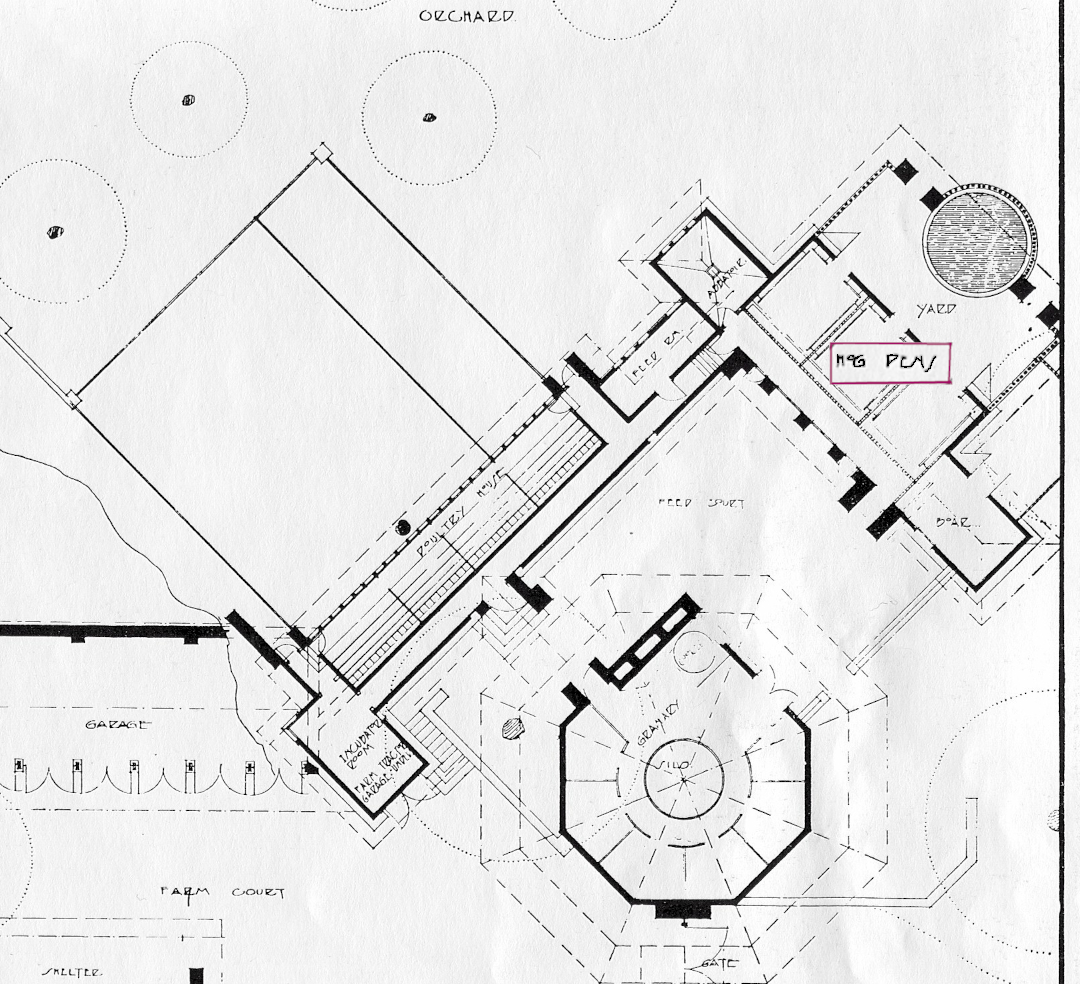The photograph above shows “Mrs. Wright’s Garden” at Taliesin. Taliesin’s Hill Crown is to the left of the wall. His sister’s house, Tan-y-Deri, is in the distance on the right.
All of us have engaged in things where obscure cultural touchstones are a part of the back-and-forth discussion.
For instance:
You can show a photograph of a Penny Farthing bicycle and some, like me, will instantly think of the surreal television series, The Prisoner
“Surreal” is probably not the correct term
but I have an MA in Art History and early 20th Century art is among my favorites, so I think I outrank you.
but it works for the description of a striking television show.
Likewise, I always think of The Prisoner when I see the photo at the top of this page, which comes from page 53 of Frank Lloyd Wright and Taliesin, by Frances Nemtin.
What you are seeing is the sitting area around “Mrs. Wright’s Garden” at Taliesin. And the swirly canopies above the chairs are making me think that.
Which
the Taliesin Fellowship started construction on by 1961.
they later added a swimming pool, which you’ll see below.
But the photo above just has the little wading pool on its right-hand side. That little pool has a fountain feature in blue like the feature you see, in red, at a pool at Wright’s Taliesin West.
I took a photo of the pool and showed it in my post, “Taliesin West Inspiration“.
Another photo,
below, shows the area in 1968. By then it had an inground pool:
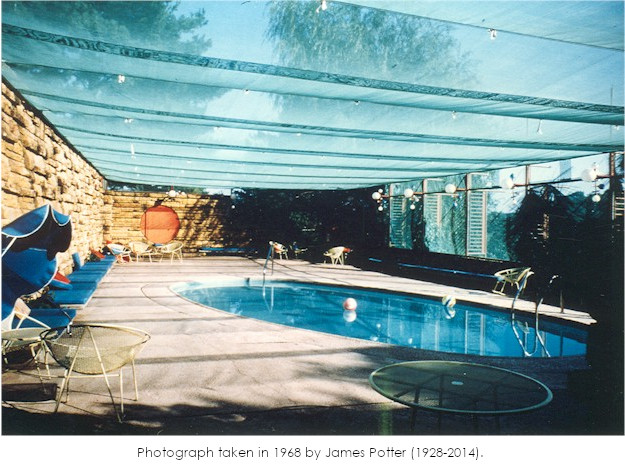
Photograph in summer looking (plan) east at the pool in Mrs. Wright’s Garden. The photographer, “Jim” Potter, said he took this photograph in 1968.
The swirly canopies over the chairs, and my thoughts of The Prisoner comes from the umbrellas over the chairs at the top of the post make me think there should be some women standing in mini-skirts in the ’60s, like this enjoyable foray from the Carol Burnett Show:
For years
the pool and garden were just south of Taliesin’s Hill Crown. The area was surrounded by square, limestone walls and was added by 1961 (and the pool was added by ’68). Its existence (along with the Taliesin pond on the estate) probably increased mosquitos, so netting was added above it. The netting was light blue, which you can see in the photo.
btw: the chairs were there when Wright was alive. If you look at the book by Nemtin, you can see a photograph of Wright and his family sitting in them on Page 62.
The pool and walls were removed after Olgivanna died in 1985 (she died in March and I think they started the removal that summer). If you look closely at the Hill Crown retaining wall, you can see where the stone changed. Just so you’re not crawling around on the grass during your next Taliesin tour, I took the photo below at the Hill Crown retaining wall:
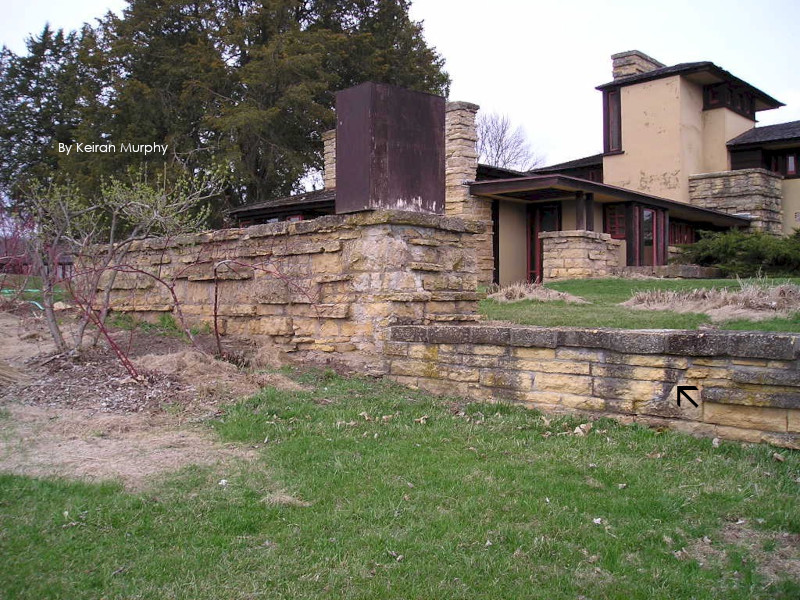
I took this in April 2005. The slight arc I pointed out on the stone in the photo was where I think a “Moon Gate” went (you can see another moon gate in the two photos above).
Because of the garden/pool
I’ve introduced at least two people to the surreality of The Prisoner by sending them the photo of that pool.
well, okay, and maybe talking to them about show and showing them clips on YouTube. But that’s… mostly it, I swear.
So
moments from that show (which I’ve only seen once or twice) still make me twist my head up like a dog trying to understand what the hell the silly humans just said.1
And yet, we all have these things.
Iconic moments
images, words, and ideas that connect us to a certain group at a certain time.
And once, while at college, one of my roommates kept a running list of the “in-jokes” we all shared. As I recall we had a list of over 100 in-jokes at the end of our sophomore year.
btw—several, including me!, have won awards.
We’re all winners.
And yet, The Prisoner brings to mind
another tangent:
hang on:
It’s the moment when I was introduced to a set of Star Wars fans. I found out about this subset while watching Weird Al Yankovic‘s video for “White and Nerdy“. The guy I was dating mentioned Weird Al getting a videocassette copy of a program.
That moment slipped by me as unimportant.
Not important to me, but important to him and others in this small subset. Because what Weird Al surreptitiously received was a contraband copy of The Star Wars Holiday Special. a.k.a.: The Special That Director George Lucas Tried To Kill, but was unsuccessful due to geekiness at the Ultra-Level.
As a result, that boyfriend and I watched the SWHS on YouTube. I will not provide a link to that show; if you want to see it, goddamn it, Google it. It is a thing you cannot unsee. I later wrote to myself that:
Yes, I am one of the few, the not-so-proud, to have seen the mythical ‘Star Wars’ Holiday Special….
I now know what makes Harrison Ford so bitter.
And, oh those inside jokes, the moments of small touchstones.
Lastly, regarding touchstones:
We in the U.S.A. are upon Thanksgiving and many of us are reminded of family.
And, of those small touchstones and family thoughts, I recall that I expected a time in which I’d have to start listening to my oldest sister prepare for her upcoming birthday. I figured she would talk about this in the year up to it. Because that birthday would be on the numbers that you see below:

Could have been that she never would have thought about it and would have thought I was weird for it coming into my head.
Which still brings me back to something published a few years ago on Facebook by Lay Minister Patti Fitchett: “He’s my brother and he weighs a ton!“
Her essay addresses what it’s like to lose a sibling. In part she writes:
Often our feelings for our real life siblings don’t come close to the fairy tale relationships we see depicted in movies. How many of us remember a childhood punctuated by shrieks of “Mom, they’re pointing at me again! Make them stop pointing at me!”?
If I’m around in the future I might remember that numerical coincidence that will mark her birthday anniversary.2
First published November 22, 2023.
The photograph at the top of this page was published in Frank Lloyd Wright and Taliesin, by Frances Nemtin, p. 53. It is care of The Frank Lloyd Wright Foundation Archives (The Museum of Modern Art | Avery Architectural and Fine Arts Library, Columbia University, New York).
Notes:
- The Simpsons did a great send up of moments from The Prisoner in this edited video.
- Bummer alert: E will not be here to celebrate it and is not here to remember it. That’s due to dumbass cancer.

